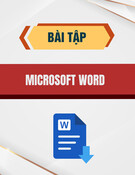
1.1 Silberschatz, Galvin and Gagne ©2009
Operating System Concepts – 8th Edition Silberschatz, Galvin and Gagne ©2009
Operating System Concepts – 8th Edition
Chapter 1: Introduction

1.2 Silberschatz, Galvin and Gagne ©2009
Operating System Concepts – 8th Edition
Chapter 1: Introduction
■What Operating Systems Do
■Computer-System Organization
■Computer-System Architecture
■Operating-System Structure
■Operating-System Operations
■Process Management
■Memory Management
■Storage Management
■Protection and Security
■Distributed Systems
■Special-Purpose Systems
■Computing Environments
■Open-Source Operating Systems

1.3 Silberschatz, Galvin and Gagne ©2009
Operating System Concepts – 8th Edition
Objectives
■To provide a grand tour of the major operating systems components
■To provide coverage of basic computer system organization

1.4 Silberschatz, Galvin and Gagne ©2009
Operating System Concepts – 8th Edition
What is an Operating System?
■A program that acts as an intermediary between a user of a computer
and the computer hardware
■Operating system goals:
●Execute user programs and make solving user problems easier
●Make the computer system convenient to use
●Use the computer hardware in an efficient manner

1.5 Silberschatz, Galvin and Gagne ©2009
Operating System Concepts – 8th Edition
Computer System Structure
■Computer system can be divided into four components:
●Hardware – provides basic computing resources
4CPU, memory, I/O devices
●Operating system
4Controls and coordinates use of hardware among various
applications and users
●Application programs – define the ways in which the system
resources are used to solve the computing problems of the
users
4Word processors, compilers, web browsers, database
systems, video games
●Users
4People, machines, other computers

![Bài giảng Phần mềm mã nguồn mở [mới nhất]](https://cdn.tailieu.vn/images/document/thumbnail/2025/20250526/vihizuzen/135x160/6381748258082.jpg)


![Bài giảng Hệ điều hành: Trường Đại học Công nghệ Thông tin (UIT) [Mới nhất]](https://cdn.tailieu.vn/images/document/thumbnail/2025/20250515/hoatrongguong03/135x160/6631747304598.jpg)


![Bài giảng Hệ điều hành Lê Thị Nguyên An: Tổng hợp kiến thức [mới nhất]](https://cdn.tailieu.vn/images/document/thumbnail/2025/20250506/vinarutobi/135x160/8021746530027.jpg)












![Đề thi Excel: Tổng hợp [Năm] mới nhất, có đáp án, chuẩn nhất](https://cdn.tailieu.vn/images/document/thumbnail/2025/20251103/21139086@st.hcmuaf.edu.vn/135x160/61461762222060.jpg)


![Bài tập Tin học đại cương [kèm lời giải/ đáp án/ mới nhất]](https://cdn.tailieu.vn/images/document/thumbnail/2025/20251018/pobbniichan@gmail.com/135x160/16651760753844.jpg)
![Bài giảng Nhập môn Tin học và kỹ năng số [Mới nhất]](https://cdn.tailieu.vn/images/document/thumbnail/2025/20251003/thuhangvictory/135x160/33061759734261.jpg)
![Tài liệu ôn tập Lý thuyết và Thực hành môn Tin học [mới nhất/chuẩn nhất]](https://cdn.tailieu.vn/images/document/thumbnail/2025/20251001/kimphuong1001/135x160/49521759302088.jpg)
